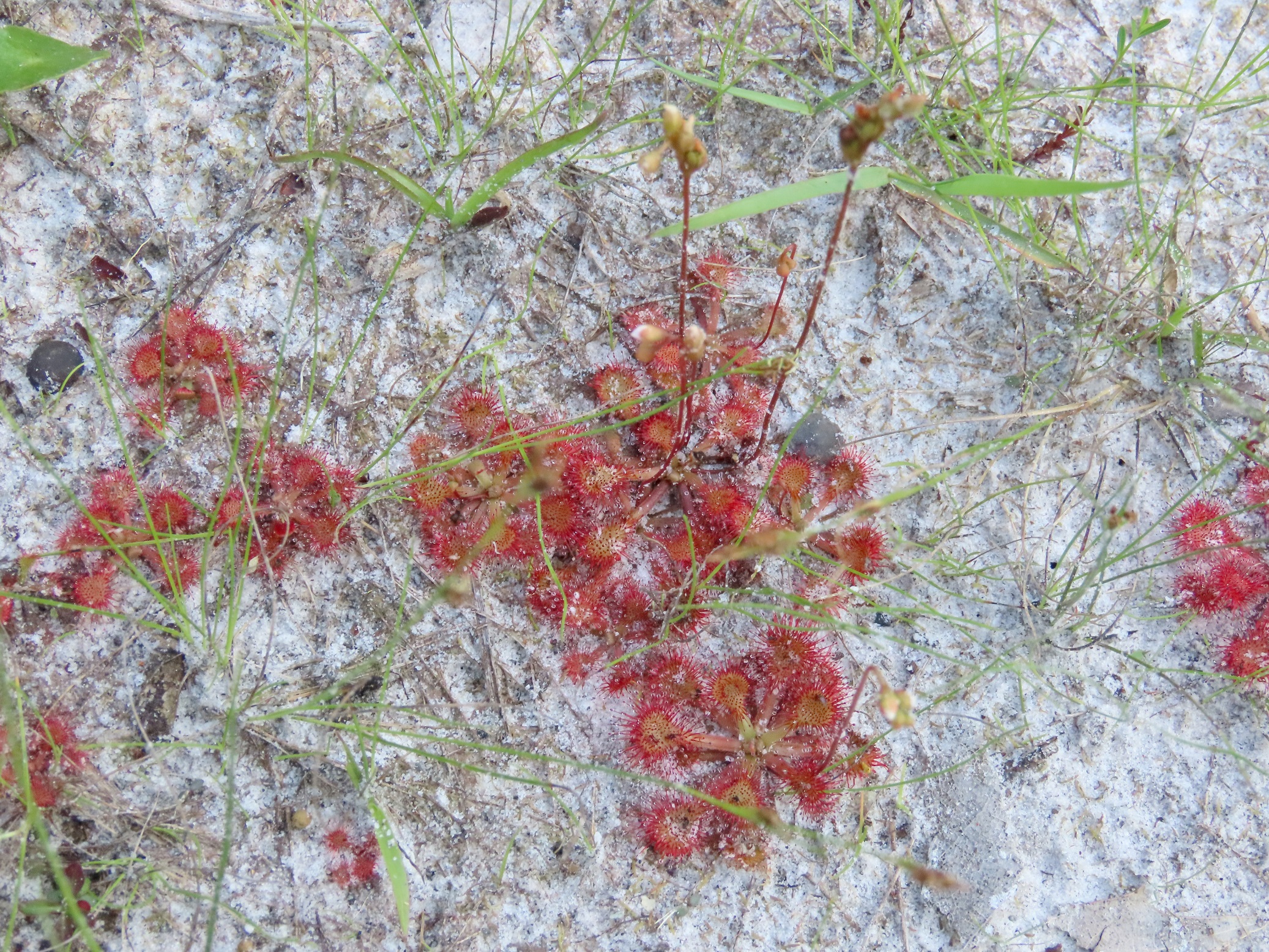
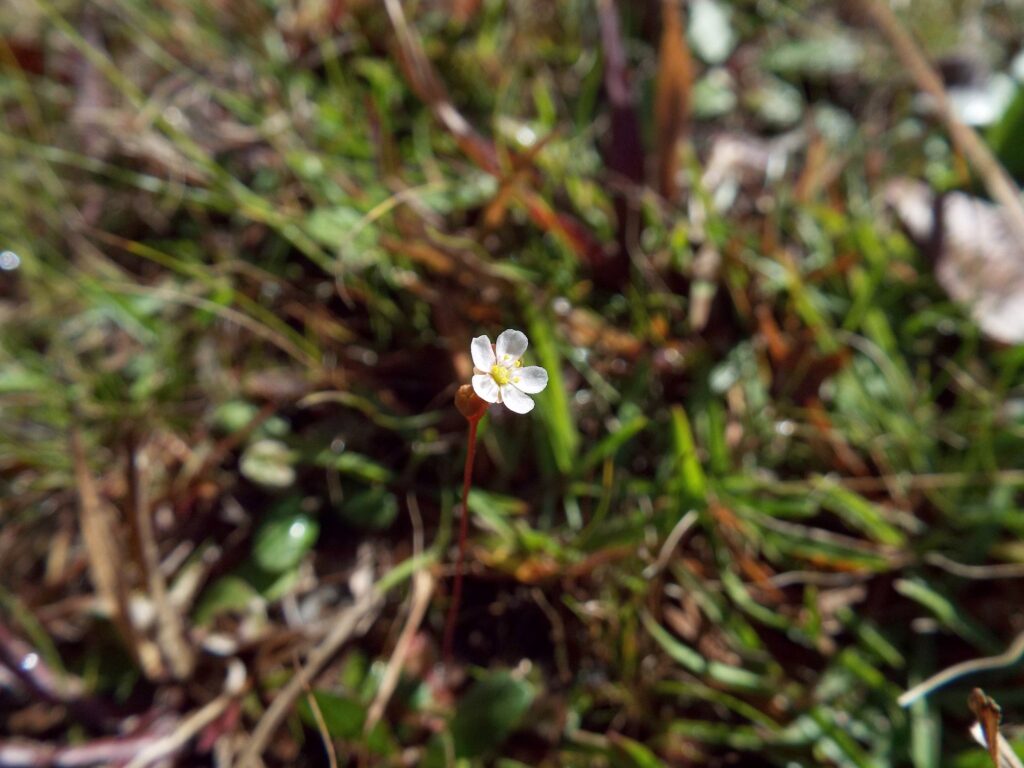
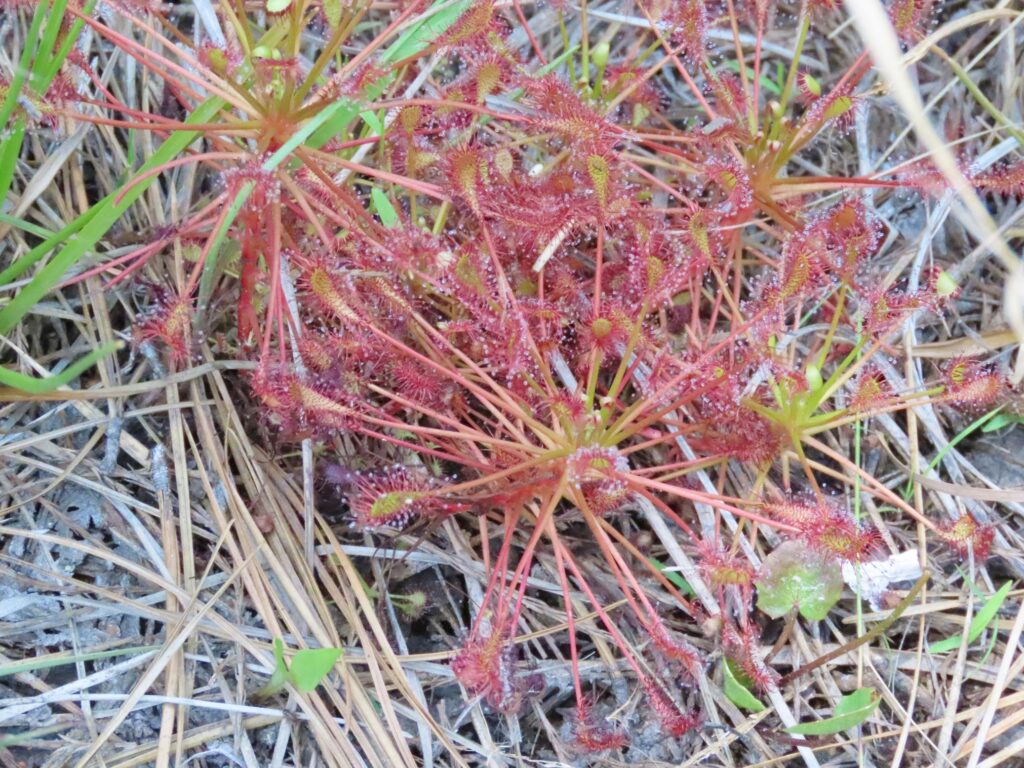
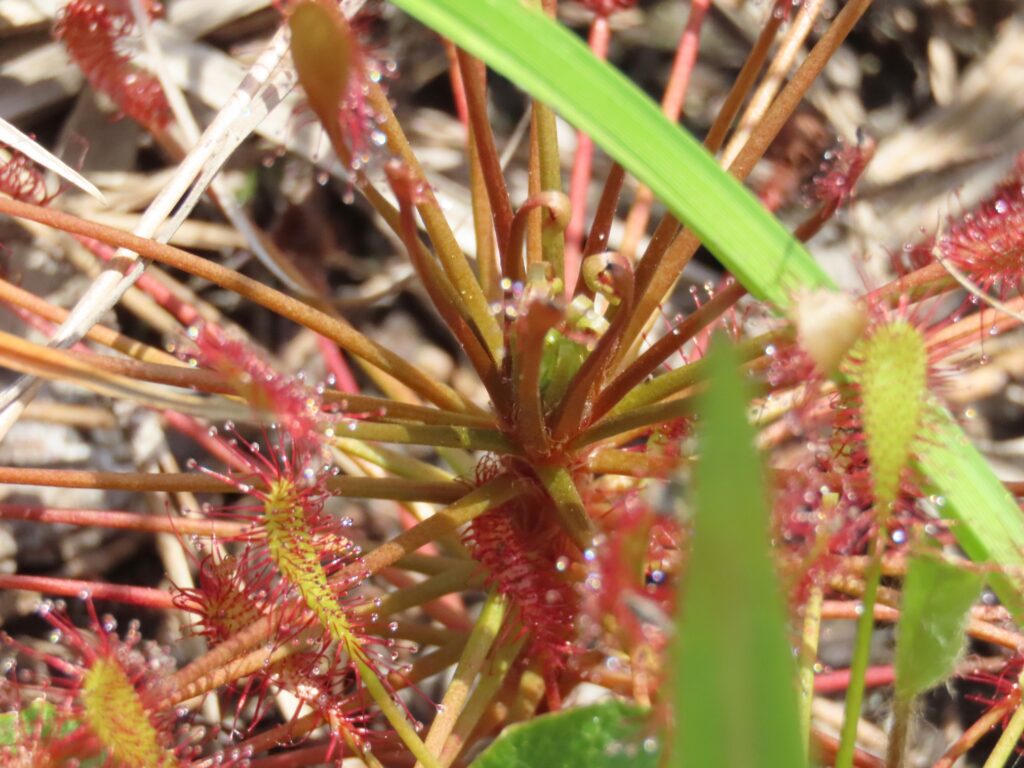
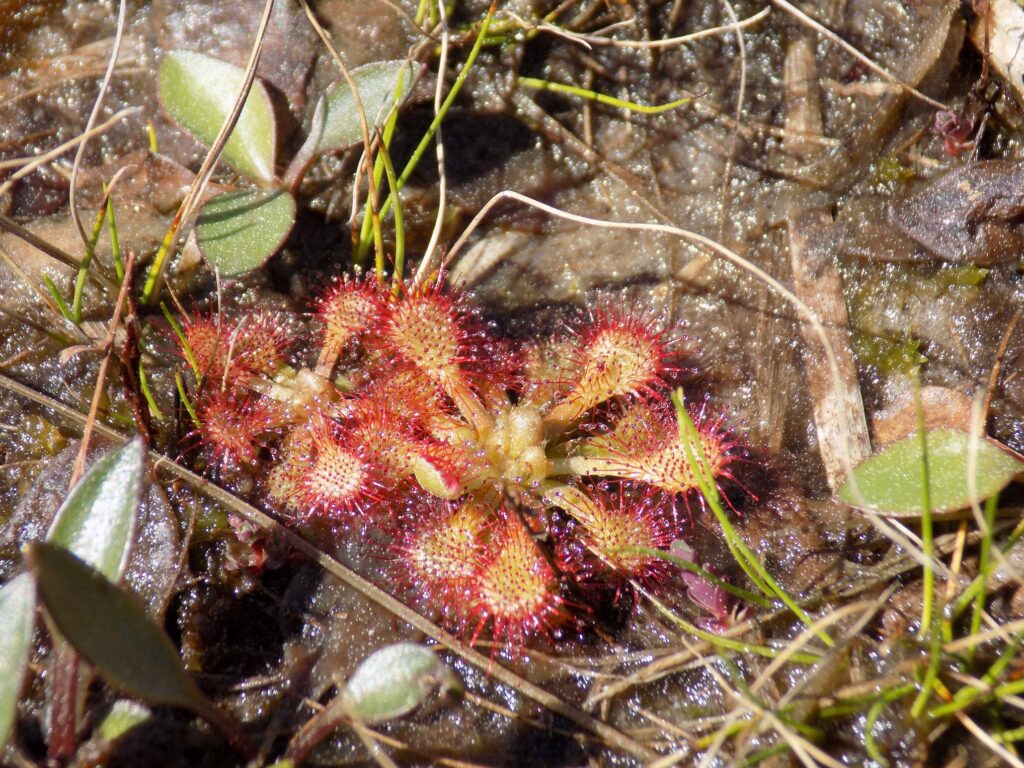
This week for Flora and Fauna Friday, it’s a small, sticky, bug-eating set of plants: the Sundews of genus Drosera.
Sundews are one of our more common groups of carnivorous plants but are still not all that easy to find. We have three widespread species of Sundew in South Carolina: Pink Sundew (Drosera capillaris), Spoon-leaved Sundew (D. intermedia), and Dwarf Sundew (D. brevifolia). All sundews prefer bare, sandy soils with plenty of moisture and are almost always encountered in Longleaf Pine savannas, flatwoods, the margins of carolina bays, and other fire-adapted habitats with adequate soils. They grow low to the ground as a rosette and are less than three-inches in diameter. Their bloom time peaks in early to mid-spring and their small, pale, five-petalled flowers appear atop long narrow stalks. Sundews can be either perennial or annual, depending on environmental conditions throughout the year. This genus is an easy one to identify here in the Lowcountry as all of our species share unique physical characteristics. Sundews have chartreuse and rosy-scarlet foliage with leaves that are spoon-shaped and covered in thick scarlet hairs. The means by which Sundews capture and eat insects is found on those scarlet hairs. The tip of each hair produces a tiny droplet of crystal clear liquid, like dew drops in the morning sun. This fluid is sweet smelling and attracts flies, ants, and other minute insects. When an insect lands on the leaf, the droplets adhere to it like glue, sticking it to the plant. Contact with prey also signals the leaf to cup or roll around the critter, increasing the number of hairs that make contact. The plant will then secrete digestive fluids through the ends of the hair and absorb the nutritious bug bits through the surface of the leaf.
Pink Sundew is probably the most common species in our area and needs wet sandy soil to survive. It is fairly small, usually only an inch or inch-and-a-half in width and with short leaves shaped like a wooden spoon. Its bloom time peaks throughout April and its flower is small and pale pink. Pink Sundew is perennial.
Spoon-leaved Sundew is most commonly found in acidic ephemeral wetlands and likely the hardest of today’s three to find. However, it’s certainly the easiest to identify. Spoon-leaved Sundew is much larger in size, at around two to three-inches in diameter, with long, narrow, oar-shaped leaves. The plant is a perennial, has a more three-dimensional globe-shape, and also grows taller over time but does not stay upright. Its flower is white and small relative to the size of the whole plant and its bloom time peaks in May and again in August.
Dwarf Sundew is the smallest of our Sundews but also the least habitat specific. It is similar in appearance to the Pink Sundew and prefers similar habitats but will tolerate drier soils. Dwarf Sundew grows to only about half-an-inch in diameter, stays flat to the ground, and has more teardrop-shaped leaves with hairs down to the bud. Its bloom time peaks between the end of March and early April and it does not have a secondary bloom period. The flower of Dwarf Sundew is white and, relative to the size of the plant, is quite large compared to our other two species.